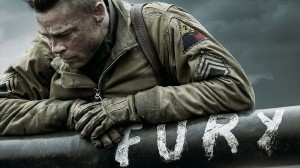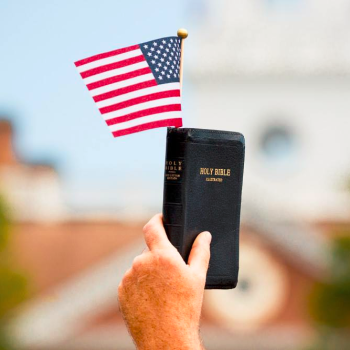Fury is a film that pits humanity against the machines of war. It’s a film which intentionally wears its angst-riddled heart on its sleeve simply for the sake of capturing a glimpse of life. It willingly casts aside any interest in preaching to you for the opportunity to show you the underbelly of war. It blatantly thumbs its nose at the long history of how war movies are typically crafted in Hollywood for the chance to give us something new that might change the way we conceptualize war.
It puts one thing before all others, possibly even before its own success: being “real”.
Writer/Director David Ayers (End of Watch) went to extremes in order to bring what he wanted to be the most realistic World War II movie ever brought to screen by designing everything from costuming to lighting, authenticity seemed to be the driving factor – even to the extent of bringing an impressive and imposing Tiger 131 tank to set for the filming of a key scene when there are only six left in the world.
According to Ayer, “Even when somebody in the audience doesn’t understand what they’re seeing, when it’s right it all snaps together and matches the pictures that we’ve all seen in newsreels and on TV. That’s what I’m after.” Ayer achieves that and more. But he does it in a way that manages to not call attention to itself.
Well, Fury doesn’t call attention to itself with one exception: the brutality of war. After watching the film, I can only imagine that he did, indeed, capture the brutality of war on screen and you simply cannot help but pay attention to it.
Fury’s cinematography is every bit as grand as that of films like Dances With Wolves, but is done in such a minimalistic, realistic style that it manages to deflect your attention from exactly how impressive it is in precisely the way Dances With Wolves doesn’t.
The musical score is exactly what you would expect from Steven Price, who took home the Oscar® for his score to Gravity. While it is what you would expect from him, it is not what we typically hear in war movies. It doesn’t simply underscore the movement of the story and add trumpeting exclamation marks for battle scenes, instead, it elevates the emotional underpinnings for both the most interpersonal and most violent parts of the film. Price’s score is very much part of the movie’s dialogue. Taking cues from the juxtaposition of humanity over and against the machines of war, “… often the score goes from these very, very tiny and pure moments to these primal, orchestral sounds,” as Price put it.
Much of the film focuses on the relationship between the characters played by Brad Pitt (Fight Club, Moneyball, World War Z) and Logan Lerman (The Perks of Being a Wallflower, Percy Jackson, Noah). Consideration of these two characters, Wardaddy and Norman, gives a bit of insight into the very careful and well-crafted writing Avery brings to the film.
In the film, Wardaddy journeys from a war-hardened killer who doesn’t let anybody “in” to a somewhat compassionate (still war-hardened killer) who has begun to crack and begins to have moments of real interpersonal relationship.
Norman follows a nearly opposite character arc, coming into the tank crew as a typeset who can, in no way, bring himself to kill (even with the fresh memory of a horrendous death brought on by his own previous hesitation) and, with the help of Wardaddy, he moves to an integral member of a war machine known as Fury – the name of the tank.
It all happens in the course of 24 hours.
There are several members of the tank family who are actively upfront about their faith – specifically, Christianity. Set within the context of what I have to believe is a graphically accurate movie about a war where more than 60 million people were killed, the question of faith and how it impacts soldiers is not only fascinating, but it is necessarily complex and diverse.
While Norman’s resistance to killing is clearly rooted, to some degree, in his faith, and other characters also have intriguing underpinnings of faith, I found one specific character to be the most fascinating when it comes to the tension between killing and Christian faith.
For me, the most fascinating character when it comes to the question of faith and violence was played by Shia LaBeouf. Boyd “Bible” Swan is the tank’s gunner, operating a sixty-seven millimeter high-velocity cannon. Looking at Swan’s war name, “Bible”, I’m not sure Avery could have been much more obvious in asking us to struggle with the relationship between a religion whose namesake taught his disciples to love your enemy and the horrifically gruesome task assigned to Swan. As LaBeouf puts it, “It’s interesting for me to explore how a man who reads scripture and has faith – a Christian – reconciles that with being in combat.” Undoubtedly, that is one of the overarching themes for Avery in writing the screenplay.
Ultimately, and not surprisingly (also not very much of a spoiler), his character, Swan, handles the tension of faith and violence by practicing cognitive dissonance. Basically, declaring WWII a holy war and even inferring that their survival is ordained by God without giving any regard to the particular teachings of Jesus which lead some people to practice a life of non-violence.
Admittedly, I first saw Fury as a critique of faith – frankly, it was a critique that I agreed with for the most part. However, after some reflection, I believe it may actually be a more sympathetic take on the issue. For that matter, it may even be a look at how faith plays a role for some people in getting through living hells. At the same time, it reminds us of how religion is frequently used as a tool to push humanity and individuals into war.
Avery seems to have no problem with such unresolved tensions. It’s a refreshing thing to see out of Hollywood. The result is yet another level of “realness” in the film that we typically don’t see enough of. Yes, Swan is a deeply religious man and, yes, he loves killing the enemy. And I do mean loves it. And Avery is just fine without resolving that.
Fury isn’t so much making a clear statement or a judgement about that state of inner conflict as it is simply presenting the realities of life, death and war, and allowing us to grapple with it ourselves. In many ways, that’s what it does with everything in the film.
Avery wanted to present a film that was real and authentic… He did it.
When it comes to the physical violence, it may be too real for its own good because there will be those who are simply not able to stomach the all too graphic presentation of the violence of war. In many ways, that underscores our all too white-washed concept of war which is directly related to the cleaned up coverage we see on the news and, in the end, that’s what won me over.
I do not like war films – at all. Particularly World War II films which, by and large, paint U.S. soldiers as nothing but stoic and benevolent heroes.
Avery wanted a real film.
In war, there are no one-hundred percent stoic and benevolent heroes.
There are, of course, plenty of people doing heroic things, but as Civil War General William Sherman once said, “War is hell” and, hell… it changes a person. Impressively, it’s something the movie shows us in the course of a mere 24 hours.
Fury won me over by letting being unabashedly real be it’s primary agenda. It isn’t trying to make a statement. It isn’t trying to influence the viewer’s thinking – at least not toward a specific perspective. It’s just trying to tell a made-up story about a real war in as real of a way as possible. What you take from it is entirely left in the hands of the viewer.
The result is a movie that is not pro or anti-war. It isn’t pro or anti-religion. It isn’t even pro or anti-U. S., which far too many Hollywood produced war movies fall prey to. Put simply, Fury is a masterful act of storytelling.
This is Avery’s best work which is telling when you consider his credits include the likes of End Watch, Training Day and The Fast and the Furious. He masterfully uses all the tools at his disposal with the ease of a long seasoned pro and tells the tale of the relationship of these very real, very complex characters who are thrown together to form a very real, very complex tank crew that is thrown into the midst of hell-fire on earth.
I wouldn’t be surprised to see Fury receive Oscar® nominations in Best Original Screenplay, Best Cinematography, Best Costume Design, Best Film Editing, Best Sound Editing, Best Original Score and Best Director at the very least. There’s even a chance we will see a Best Actor nod come out of Fury and possibly a Best Supporting Actor.
If you area fan of well made movies, I suggest you watch Fury. If you have a weak stomach, I suggest you don’t hit the concession stand on your way in.
Consider supporting Mark’s blogging. Help create a market for Progressive Christianity. Not through big publishers or big denominations, but through the grassroots. We need to encourage the growth of progressive Christian voices in the marketplace. Even a dollar will help.
Facebook continues to make it increasingly difficult for me to let you know about new blog posts like this. Please consider signing up for my mailing list where we can insure you are notified. Just click here!
Mark is a co-founder of The Christian Left. Come and join the conversation!
















